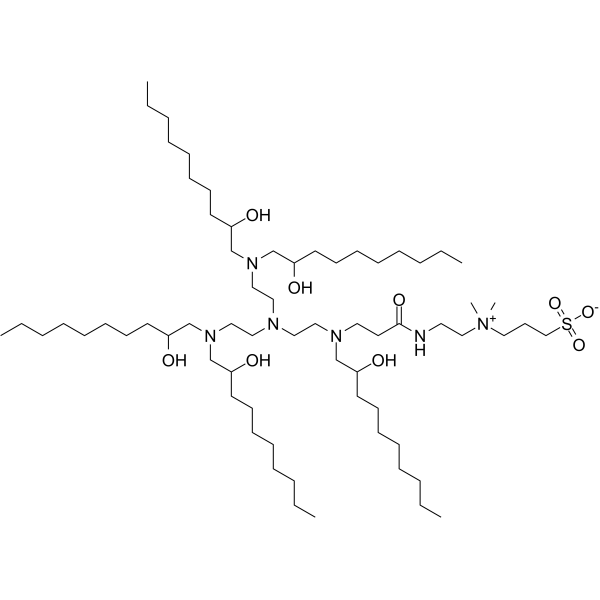Lipid-Based Drug Delivery
Products for Lipid-Based Drug Delivery
- Cat.No. Product Name Information
-
GC40327
1,2-Diarachidoyl-sn-glycero-3-PC
1,2-Diarachidoyl-sn-glycero-3-PC is a phospholipid containing the saturated long-chain (20:0) arachidic acid inserted at the sn-1 and sn-2 positions.

-
GC41788
1,2-Didecanoyl PC
Phosphatidylcholine species are a common class of phospholipids that comprise the mammalian cell membrane.

-
GC18334
1,2-Dierucoyl-sn-glycero-3-PC
1,2-Dierucoyl-sn-glycero-3-PC (DEPC) is the composition of liposome membrane.

-
GC41793
1,2-Diheptadecanoyl-sn-glycero-3-PC
1,2-Diheptadecanoyl-sn-glycero-3-PC (DHDPC) is a synthetic phosphatidylcholine containing 17:0 fatty acids at the sn-1 and sn-2 positions.

-
GC18275
1,2-Dihexadecyl-sn-glycero-3-PC
1,2-Dihexadecyl-sn-glycero-3-PC is a synthetic ether-linked phospholipid containing hexadecyl groups at the sn-1 and sn-2 positions.
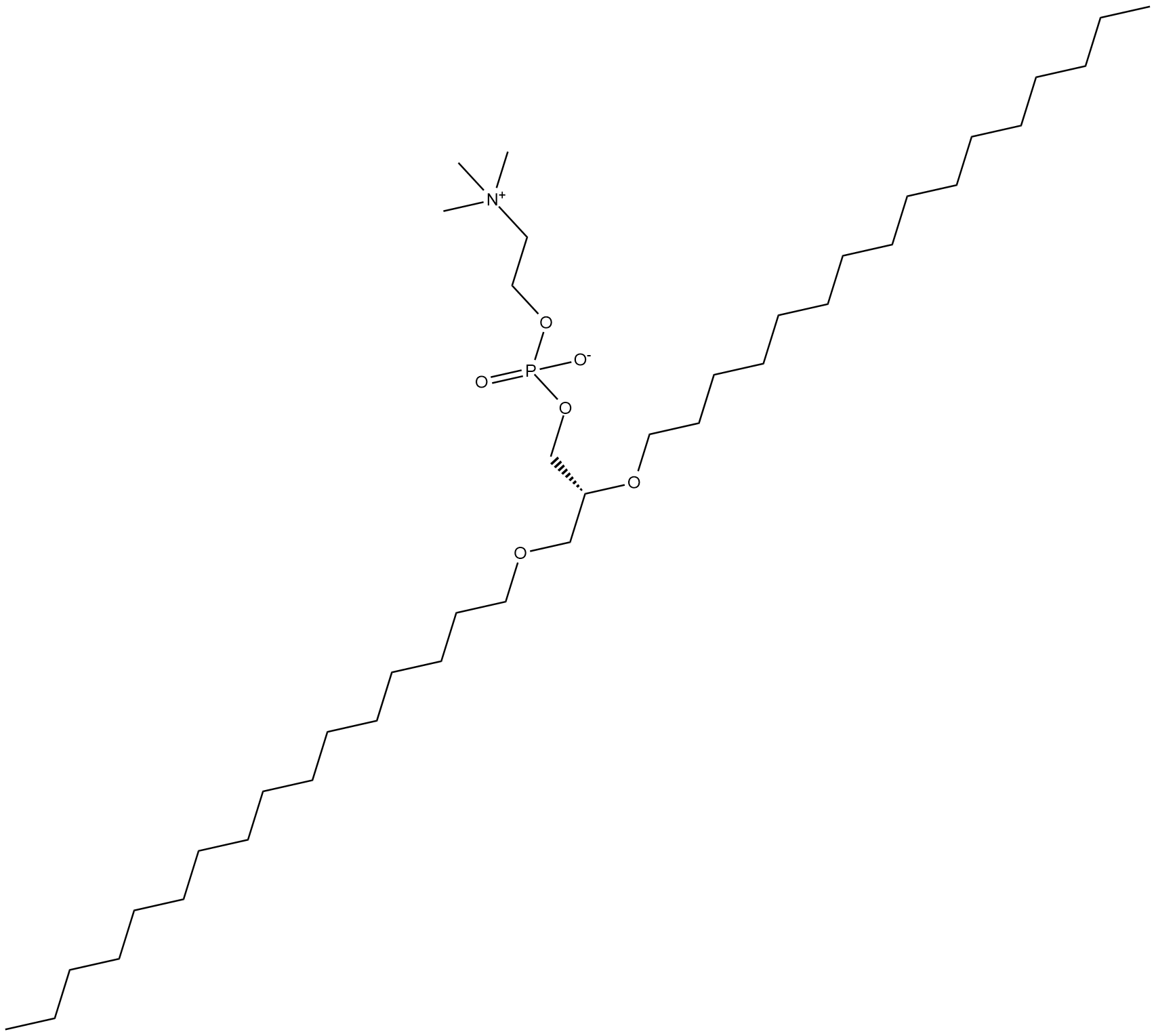
-
GC41795
1,2-Dihexanoyl-sn-glycero-3-PC
1,2-Dihexanoyl-sn-glycero-3-PC (DHPC-C6) is a synthetic phosphatidylcholine containing the short-chain (6:0) caproic acid inserted at the sn-1 and sn-2 positions.

-
GC41797
1,2-Dilauroyl-sn-glycero-3-PE
Phosphatidylethanolamines (PEs) are phospholipids found in biological membranes, serving both structural and functional roles.

-
GC41798
1,2-Dilauroyl-sn-glycero-3-PG (sodium salt)
1,2-Dilauroyl-sn-glycero-3-PG is a phospholipid containing 12:0 fatty acids at the sn-1 and sn-2 positions.

-
GC41799
1,2-Dilauroyl-sn-glycero-3-phosphate (sodium salt)
Phosphatidic acids (PAs) can be formed by the acylation of lysophosphatidic acids, the phosphorylation of diacylglycerols, or the removal of the choline group from phosphatidylcholine.

-
GC41803
1,2-Dimyristoyl-sn-glycero-3-PC
1,2-Dimyristoyl-sn-glycero-3-PC (DMPC) is a synthetic phospholipid used in liposomes.

-
GC41805
1,2-Dimyristoyl-sn-glycero-3-PG (sodium salt)
1,2-Dimyristoyl-sn-glycero-3-PG (DMPG) is a phospholipid containing the saturated long-chain (14:0) myristic acid inserted at the sn-1 and sn-2 positions.

-
GC41806
1,2-Dimyristoyl-sn-glycero-3-phosphate (sodium salt)
Phosphatidic acids (PAs) can be formed by the acylation of lysophosphatidic acids, the phosphorylation of diacylglycerols, or the removal of the choline group from phosphatidylcholine.

-
GC41807
1,2-Dimyristoyl-sn-glycero-3-PS (sodium salt)
1,2-Dimyristoyl-sn-glycero-3-PS is an anionic phospholipid containing myristic acid (14:0) inserted at the sn-1 and sn-2 positions.

-
GC18401
1,2-Dinonadecanoyl-sn-glycero-3-PC
1,2-Dinonadecanoyl-sn-glycero-3-PC is a saturated phospholipid that has been used as a standard for the quantification of phosphatidylcholines in human synovial fluid.
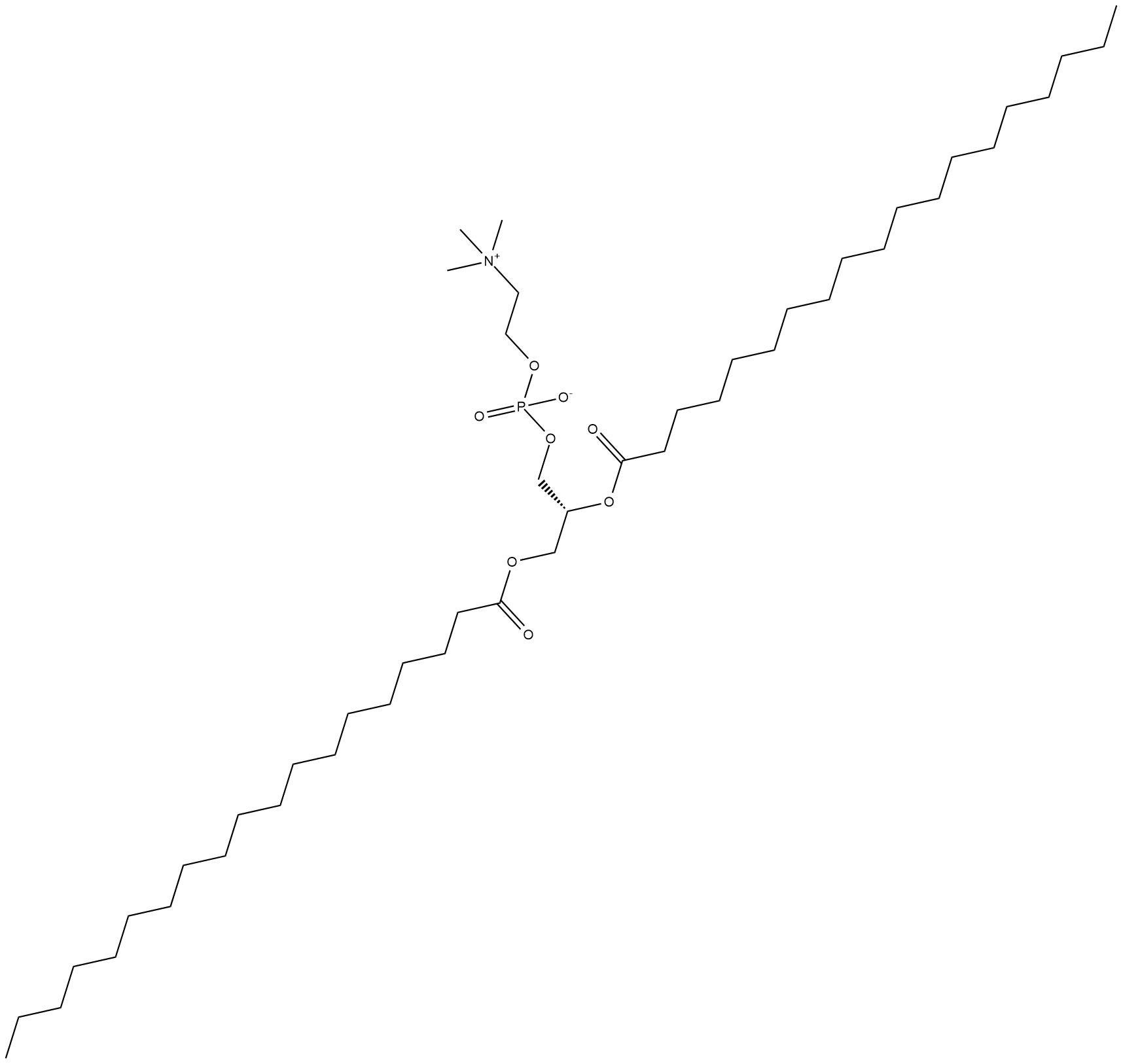
-
GC41808
1,2-Dioctanoyl PC
Phosphatidylcholine (PC) species are a common class of phospholipids that comprise the mammalian cell membrane.

-
GC18352
1,2-Dioleoyl-3-dimethylammonium-propane
1,2-Dioleoyl-3-dimethylammonium-propane is a cationic lipid.
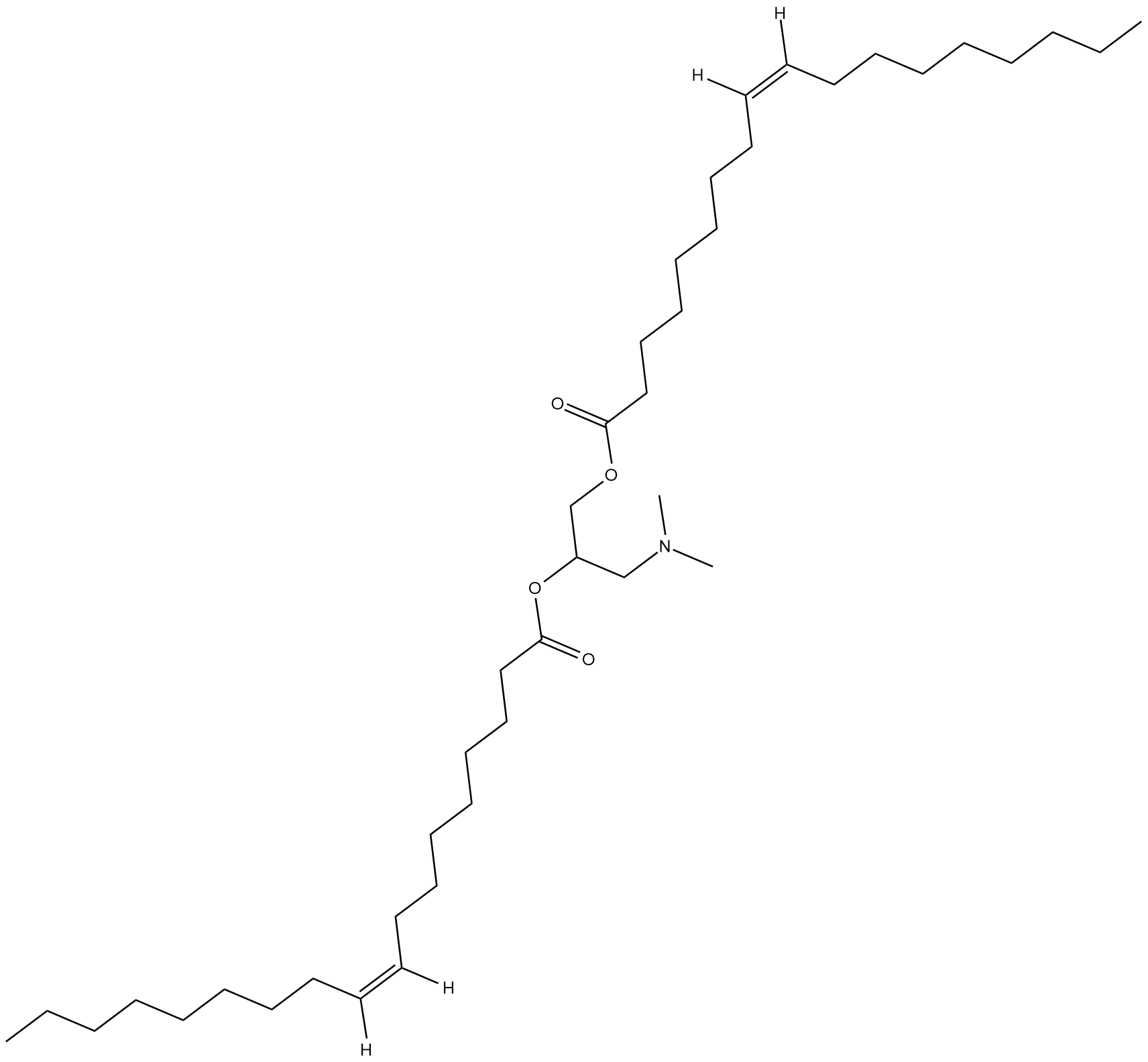
-
GC41816
1,2-Dioleoyl-sn-glycero-3-PG (sodium salt)
1,2-Dioleoyl-sn-glycero-3-PG is a phospholipid containing the long-chain (18:1) fatty acid oleic acid inserted at the sn-1 and sn-2 positions.

-
GC46379
1,2-Dioleoyl-sn-glycero-3-PS (sodium salt)
1,2-Dioleoyl-sn-glycero-3-PS (sodium salt) is a ubstitute for Phosphoserine/phosphatidylserine.

-
GC41817
1,2-Dioleyloxy-3-dimethylamino-propane
1,2-Dioleyloxy-3-dimethylamino-propane, a cationic lipid, is used for the preparation of liposomes.

-
GC46382
1,2-Dipalmitoyl-rac-glycero-3-PG (ammonium salt)
A phosphoglycerol

-
GC41820
1,2-Dipalmitoyl-sn-glycero-3-N,N-dimethyl-PE
1,2-Dipalmitoyl-sn-glycero-3-N,N-dimethyl-PE is a form of 1,2-dipalmitoyl-sn-glycero-3-PE that contains two methyl groups on the sn-3 moiety.

-
GC41821
1,2-Dipalmitoyl-sn-glycero-3-N-methyl-PE
1,2-Dipalmitoyl-sn-glycero-3-N-methyl-PE is a form of 1,2-dipalmitoyl-sn-glycero-3-PE that contains a methyl group on the sn-3 moiety.

-
GC41824
1,2-Dipalmitoyl-sn-glycero-3-PG (sodium salt)
1,2-Dipalmitoyl-sn-glycero-3-PG (sodium salt) (1,2-Dipalmitoyl-sn-glycero-3-PG sodium) is a phospholipid containing the long-chain(16:0) palmitic acid inserted at the sn-1 and sn-2 positions.

-
GC41826
1,2-Dipalmitoyl-sn-glycero-3-PS (sodium salt)
Phosphatidylserine (PS) is an anionic phospholipid that is normally restricted to the inner leaflet of the plasma membrane bilayer of cells, appearing on the outer leaflet early in apoptosis and thus available for recognition by phagocytes.

-
GC18433
1,2-Diphytanoyl-sn-glycero-3-PC
1,2-Diphytanoyl-sn-glycero-3-PC is a phospholipid used to synthesize bilayer vesicles.
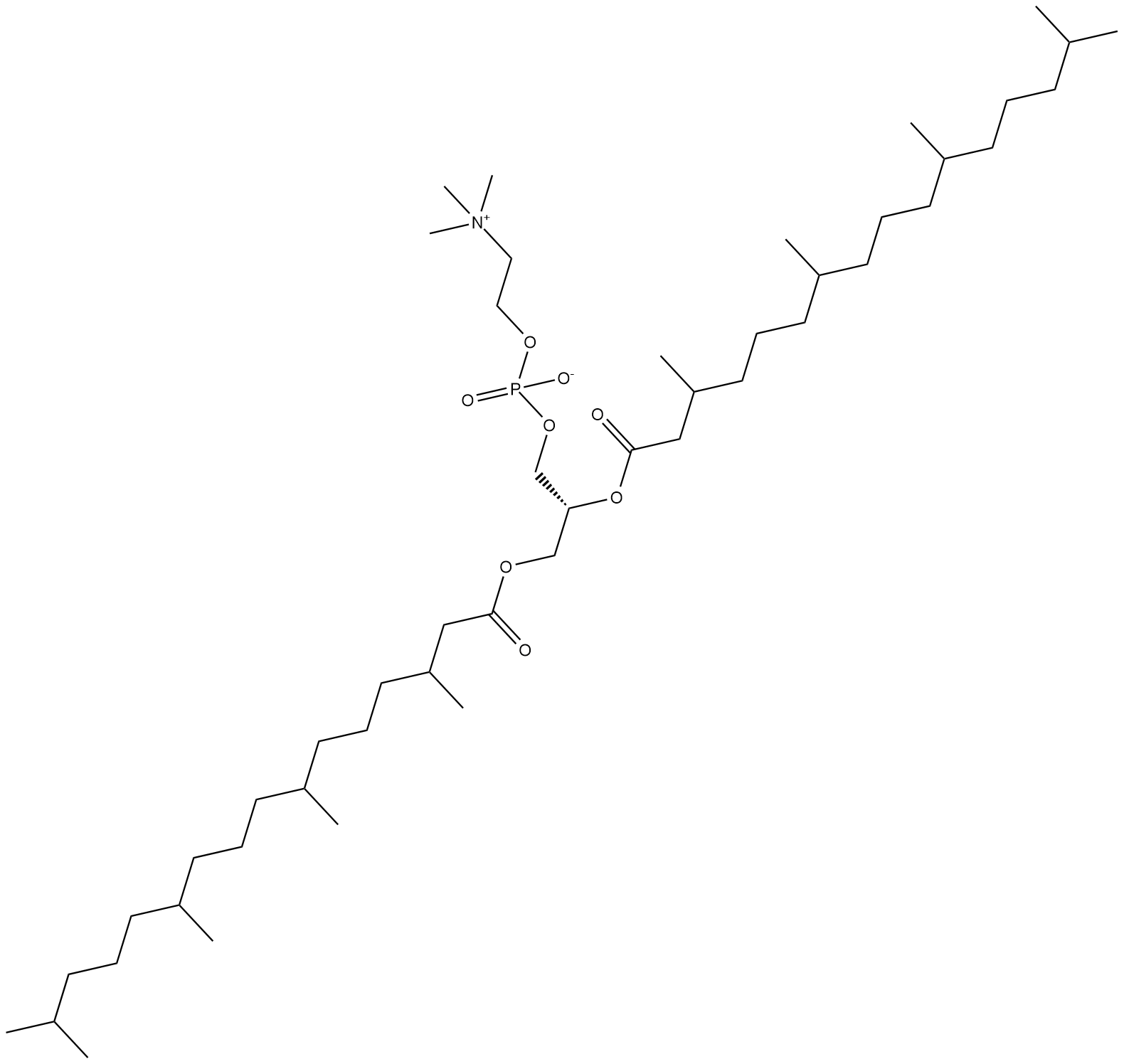
-
GC41828
1,2-Diphytanoyl-sn-glycero-3-PE
Phosphatidylethanolamines (PEs) are phospholipids found in biological membranes that serve both structural and functional roles.

-
GC52195
1,2-Distearoyl-rac-glycero-3-PG (sodium salt)
(Rac)-1,2-Distearoyl-sn-Glycero-3-Phosphatidylglycerol (sodium) is an anionic phospholipid, can be used for drug delivery and the synthesis of liposomes.

-
GC41832
1,2-Distearoyl-sn-glycero-3-PC
1,2-Distearoyl-sn-glycero-3-PC (DSPC) is a lipid that can be used to synthesize liposomes, micelles, and other types of artificial membranes.

-
GC41833
1,2-Distearoyl-sn-glycero-3-PG (sodium salt)
1,2-Distearoyl-sn-Glycero-3-Phosphatidylglycerol (sodium) is the component of liposomes for drug delivery.

-
GC41834
1,2-Distearoyl-sn-glycero-3-phosphate (sodium salt)
1,2-Distearoyl-sn-glycero-3-phosphate is a phospholipid containing a phosphatidic acid head group and 18:0 fatty acids at the sn-1 and sn-2 positions of the glycerol backbone.

-
GC41853
1,3-Dipalmitoyl-sn-glycero-2-PE
Phosphatidylethanolamines (PEs) are phospholipids found in biological membranes that serve both structural and functional roles.

-
GC42001
1-Myristoyl-2-hydroxy-sn-glycero-3-PE
1-Myristoyl-2-hydroxy-sn-glycero-3-PE is a naturally occurring lysophospholipid.

-
GC42002
1-Myristoyl-2-hydroxy-sn-glycero-3-PG (sodium salt)
1-Myristoyl-2-hydroxy-sn-glycero-3-PG is a lysophospholipid containing myristic acid (14:0) at the sn-1 position.

-
GC42013
1-Oleoyl-2-hydroxy-sn-glycero-3-PC
1-Oleoyl-2-hydroxy-sn-glycero-3-PC is an unsaturated 18:1 lysophosphatidylcholine formed in plasma by lecithin:cholesterol acyltransferase (LCAT).

-
GC40910
1-Oleoyl-2-hydroxy-sn-glycero-3-PE
1-Oleoyl-2-hydroxy-sn-glycero-3-PE is a naturally-occurring lysophospholipid and an analog of plasmalogen lysophosphatidylethanolamine.

-
GC42014
1-Oleoyl-2-hydroxy-sn-glycero-3-PG (sodium salt)
1-Oleoyl-2-hydroxy-sn-glycero-3-PG (sodium salt) is a lysophospholipid containing oleic acid (18:1) at the sn-1 position.

-
GC42016
1-Oleoyl-2-palmitoyl-sn-glycero-3-PC
1-Oleoyl-2-palmitoyl-sn-glycero-3-PC (OPPC) is a phospholipid containing oleic acid and palmitic acid at the sn-1 and sn-2 positions, respectively, that is found in biological membranes.

-
GC42026
1-Palmitoyl-2-hydroxy-sn-glycero-3-PC
1-Palmitoyl-2-hydroxy-sn-glycero-3-PC is an abundant gonadal LPC (lysophosphatidylcholine).

-
GC18651
1-Palmitoyl-2-hydroxy-sn-glycero-3-PE
1-Palmitoyl-2-hydroxy-sn-glycero-3-PE is a naturally-occurring lysophospholipid.
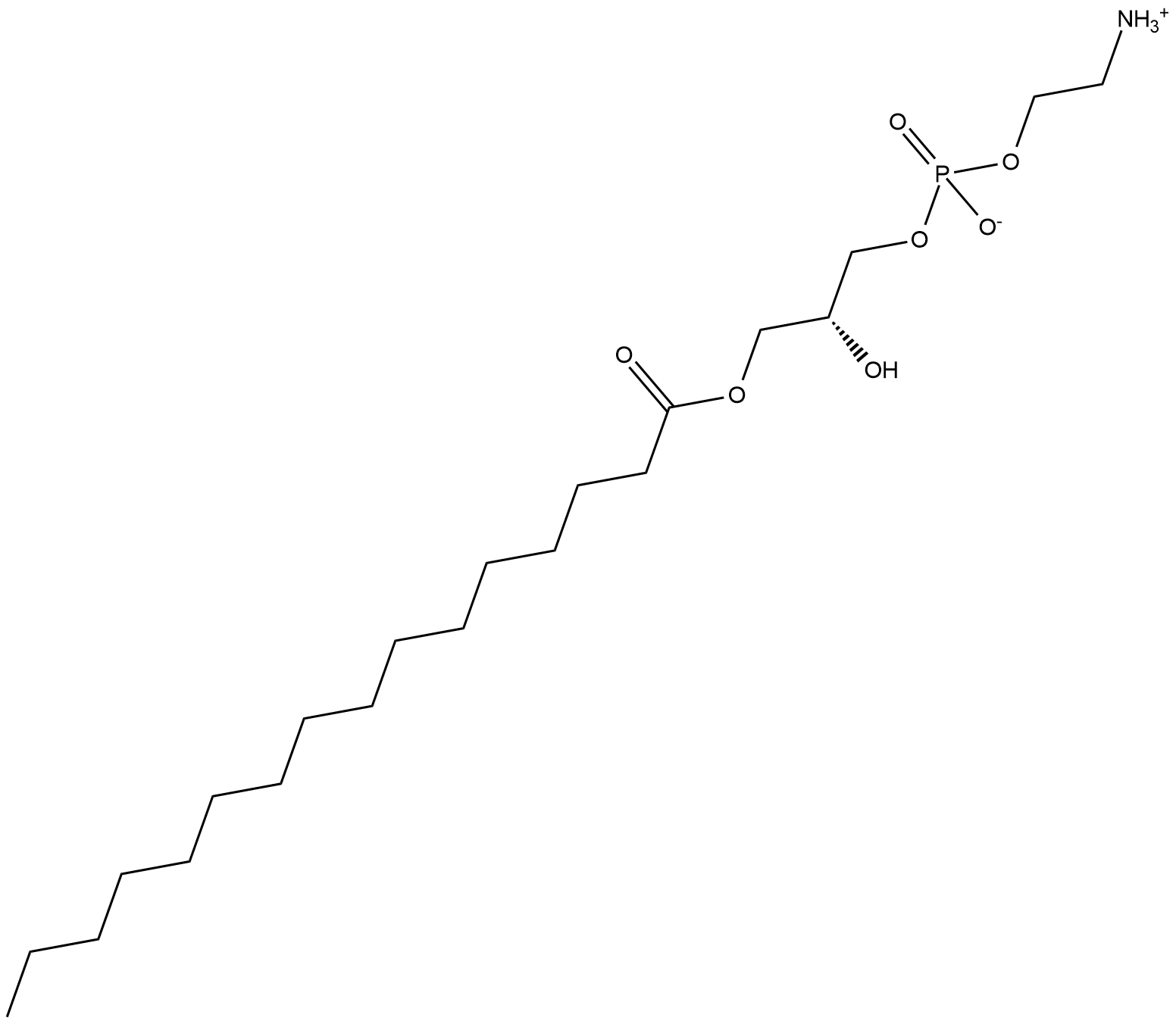
-
GC42027
1-Palmitoyl-2-hydroxy-sn-glycero-3-PG (sodium salt)
1-Palmitoyl-2-hydroxy-sn-glycero-3-PG is a lysophospholipid containing palmitic acid (16:0) at the sn-1 position.

-
GC42028
1-Palmitoyl-2-lauroyl-sn-glycero-3-PC
1-Palmitoyl-2-lauroyl-sn-glycero-3-PC (PLPC) is a phospholipid containing palmitoyl (16:0) and lauryl (12:0) acyl substituents at the sn-1 and sn-2 positions, respectively.

-
GC42032
1-Palmitoyl-2-Oleoyl-sn-glycero-3-PA
1-Palmitoyl-2-oleoyl-sn-glycero-3-PA is a phospholipid containing saturated palmitic acid (16:0) and monounsaturated oleic acid (18:1) inserted at the sn-1 and sn-2 positions, respectively.

-
GC42034
1-Palmitoyl-2-oleoyl-sn-glycero-3-PG (sodium salt)
1-Palmitoyl-2-oleoyl-sn-glycero-3-phospho-(1'-rac-glycerol) sodium salt is a lipid molecule having one negative charge, which can interact with the positive charges of peptides.

-
GC42038
1-Palmitoyl-3-oleoyl-sn-glycero-2-PE
Phosphatidylethanolamines (PEs) are phospholipids found in biological membranes that serve both structural and functional roles.

-
GC41331
1-Stearoyl-2-hydroxy-sn-glycero-3-PC
1-Stearoyl-2-hydroxy-sn-glycero-3-PC is a saturated 18:0 lysophosphatidylcholine found in plasma and oxidized LDL that is thought to play a role in inflammatory diseases and atherosclerosis.

-
GC42046
1-Stearoyl-2-hydroxy-sn-glycero-3-PG (sodium salt)
1-Stearoyl-2-hydroxy-sn-glycero-3-PG is a lysophospholipid containing stearic acid (18:0) at the sn-1 position.

-
GC40820
1-Stearoyl-2-myristoyl-sn-glycero-3-PC
1-Stearoyl-2-myristoyl-sn-glycero-3-PC (SMPC) belongs to the class of asymmetric phospholipids, which have two chains of unequal length attached to the glycerol backbone.

-
GC49310
12-hydroxy Stearic Acid
A hydroxy fatty acid

-
GC52149
306-O12B
An ionizable cationic lipidoid

-
GC52090
306Oi10
306Oi10 is a branched-chain ionizable lipidoid that can be used for constructing lipid nanoparticles (LNPs) for the delivery of messenger RNA.

-
GC52142
80-O16B

-
GC49237
93-O17O
A cationic lipidoid

-
GC49238
93-O17S
A cationic lipidoid

-
GC65316
98N12-5
98N12-5 is a novel multi-tail ionizable lipids that has been used for efficient?in vivo?siRNA–delivery to the liver.
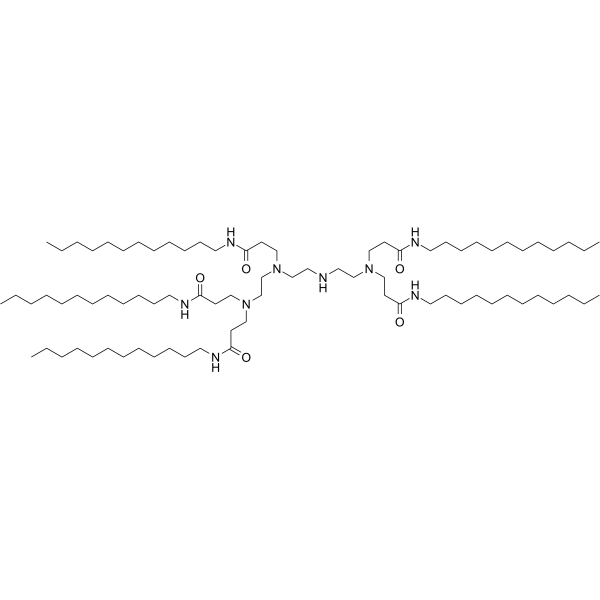
-
GC52137
9A1P9

-
GC52153
CIN-16645
CIN-16645 is a cationic lipid useful in the delivery of biologically active agents to cells and tissues (extracted from patent WO2015095340 A1).

-
GC52025
cKK-E12

-
GC52461
CLS-MPEG(2000)
A PEGylated form of cholesterol

-
GC43455
Dihexadecyl Phosphate
Dihexadecyl phosphate is a negatively-charged synthetic phospholipid that has been used to impart a negative charge to neutral liposomes.

-
GC52120
DMPE-MPEG(2000)
A PEGylated form of DMPE

-
GC49327
DPPE-MPEG(2000)
A PEGylated form of DPPE

-
GC52111
DSPE-MPEG(5000)
A PEGylated form of DSPE

-
GC49001
DSPE-PEG(2000)-amine (sodium salt)
A PEGylated derivative of DSPE

-
GC52333
DSPE-PEG(2000)-NHS
A PEGylated derivative of DSPE

-
GC49721
L-319
An ionizable and biodegradable lipid

-
GC49738
Lipid 29
An ionizable amino lipid

-
GC52182
Lipid C24

-
GC18241
Lysophosphatidylcholines
Lysophosphatidylcholines are produced by hydrolysis of the fatty acid of phosphatidylcholine at either the sn-1 or sn-2 position by phospholipase A2 (PLA2) or by lecithin-cholesterol acyltranferase (LCAT), which transfers the fatty acid to cholesterol.
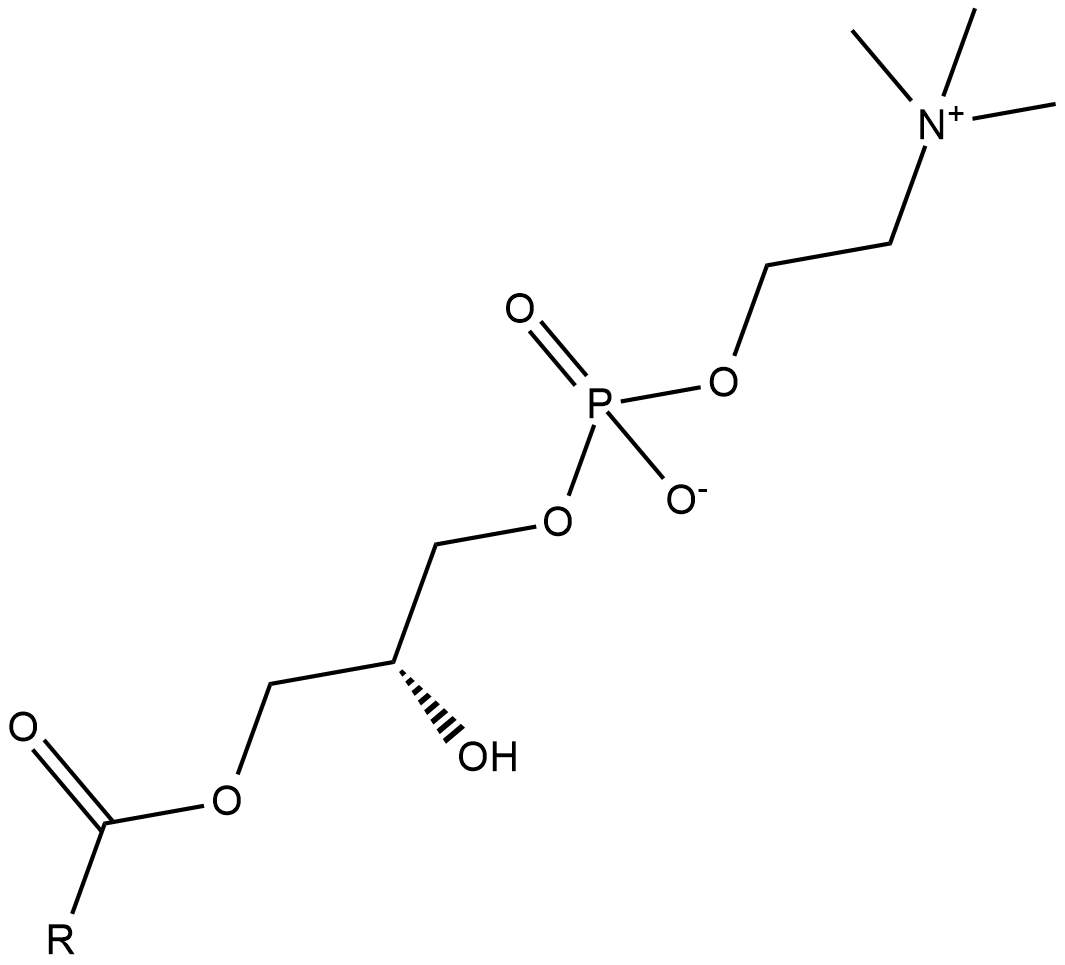
-
GC18559
Lysophosphatidylethanolamines (egg)
Lysophosphatidylethanolamine (LPE) is a naturally-occurring lysophospholipid that can be generated via deacylation of phosphatidylethanolamine by phospholipase A2 (PLA2).
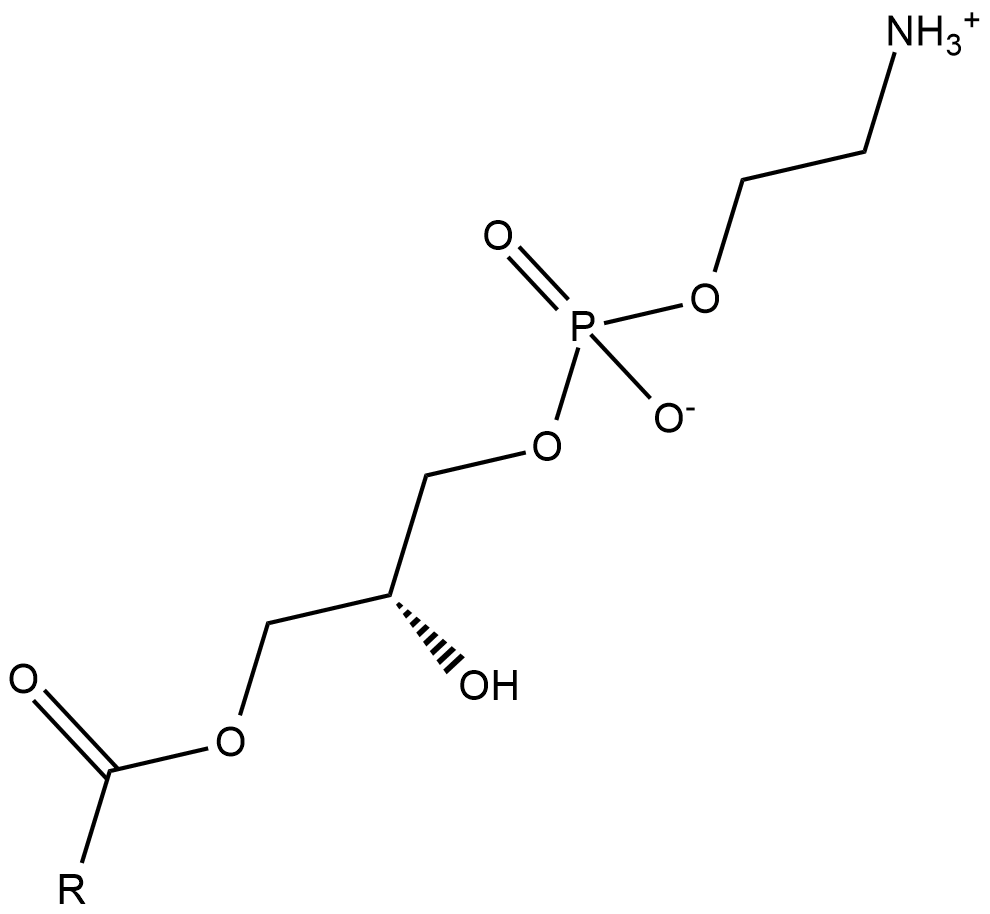
-
GC52314
Lysyllysyllysine (trifluoroacetate salt)
A tripeptide

-
GC44282
N-[1-(2,3-Dioleyloxy)propyl]-N,N,N-trimethylammonium (chloride)
N-[1-(2,3-Dioleyloxy)propyl]-N,N,N-trimethylammonium (DOTMA) is a cationic lipid.
![N-[1-(2,3-Dioleyloxy)propyl]-N,N,N-trimethylammonium (chloride) Chemical Structure N-[1-(2,3-Dioleyloxy)propyl]-N,N,N-trimethylammonium (chloride) Chemical Structure](/media/struct/GC4/GC44282.png)
-
GC52022
NT1-O14B
A cationic lipidoid

-
GC64776
OF-02
OF-02 is an alkenyl amino alcohol (AAA) ionizable lipid for highly potent in vivo mRNA delivery.
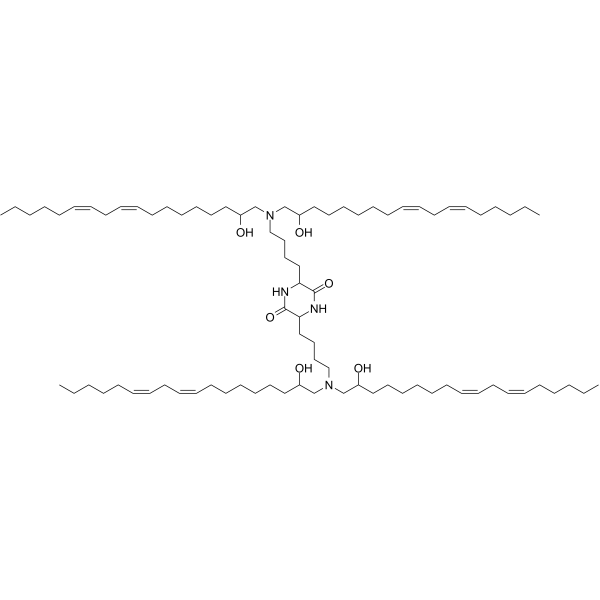
-
GC45534
OH-Chol

-
GC52107
PEG diamine
A PEGylated building block

-
GC40252
Phosphatidic Acids (egg) (ammonium salt)
Phosphatidic acid is a phospholipid and an intermediate in glycerolipid biosynthesis.

-
GC44631
Phosphatidylethanolamines (bovine)
Phosphatidylethanolamine is the most abundant phospholipid in prokaryotes and the second most abundant found in the membrane of mammalian, plant, and yeast cells, comprising approximately 25% of total mammalian phospholipids.

-
GC44632
Phosphatidylethanolamines (egg)
Phosphatidylethanolamine is the most abundant phospholipid in prokaryotes and the second most abundant found in the membrane of mammalian, plant, and yeast cells, comprising approximately 25% of total mammalian phospholipids.

-
GC18560
Phosphatidylethanolamines (soy)
Phosphatidylethanolamine is the most abundant phospholipid in prokaryotes and the second most abundant found in the membrane of mammalian, plant, and yeast cells, comprising approximately 25% of total mammalian phospholipids.
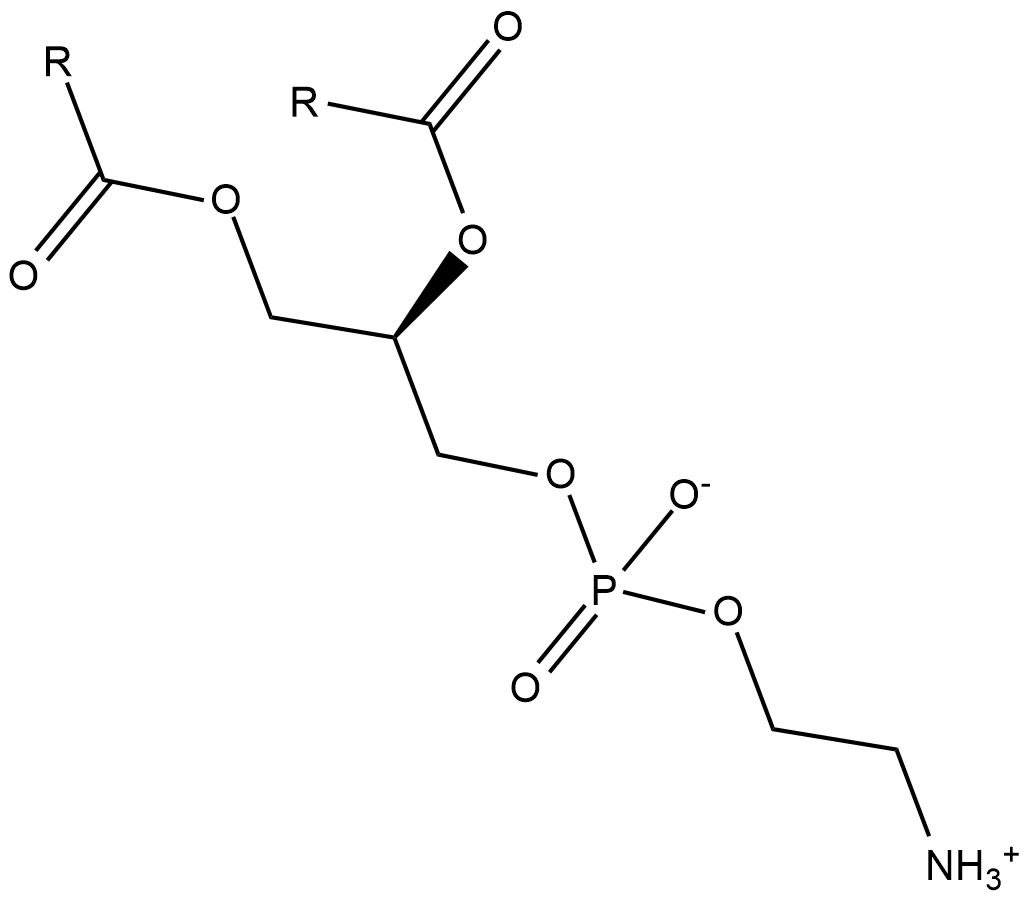
-
GC18377
Phosphatidylglycerols (sodium salt)
Phosphatidylglycerol is a naturally occurring anionic phospholipid and a constituent of plant, animal, and bacterial cell membranes.
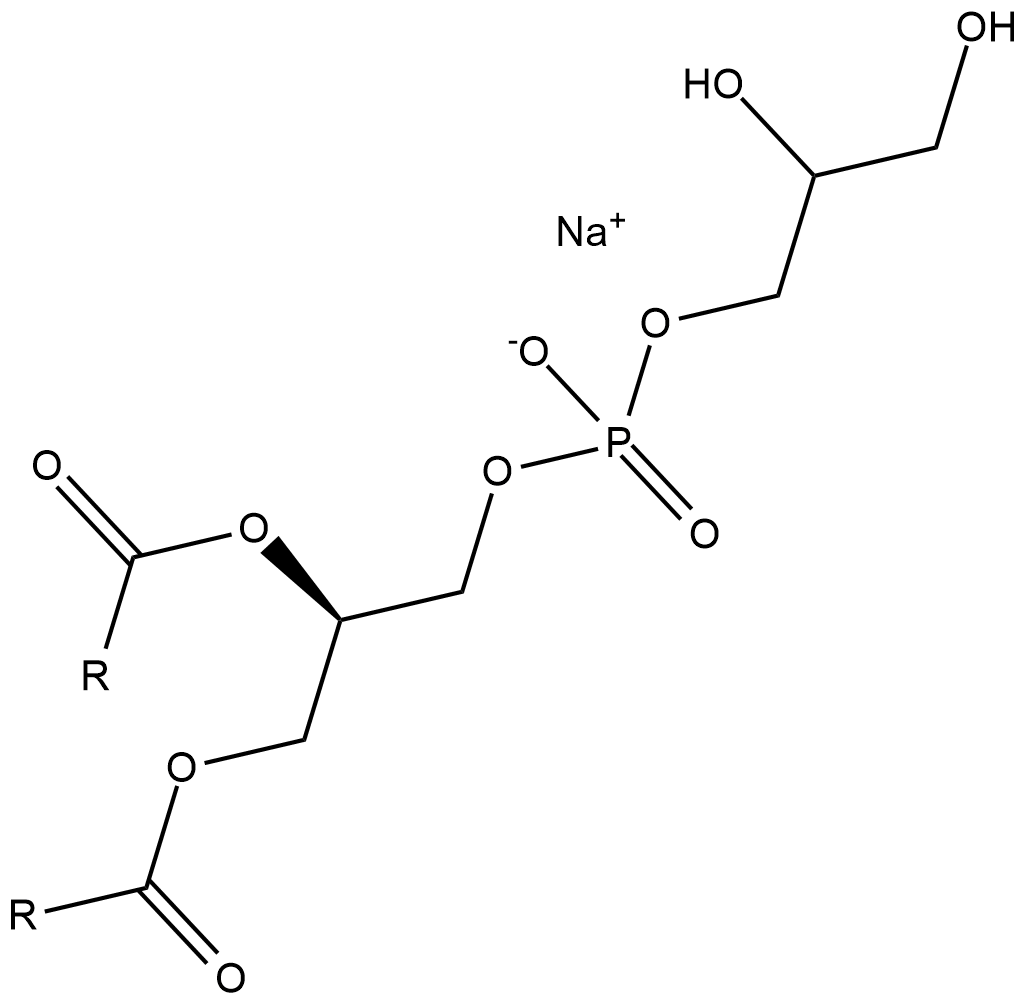
-
GC48355
Phosphatidylinositols (plant, wheat germ) (sodium salt)
A mixture of phosphatidylinositols

-
GC18636
Phosphatidylinositols (soy) (sodium salt)
Phosphatidylinositols (soy) (sodium salt) is a mixture of phosphatidylinositols.
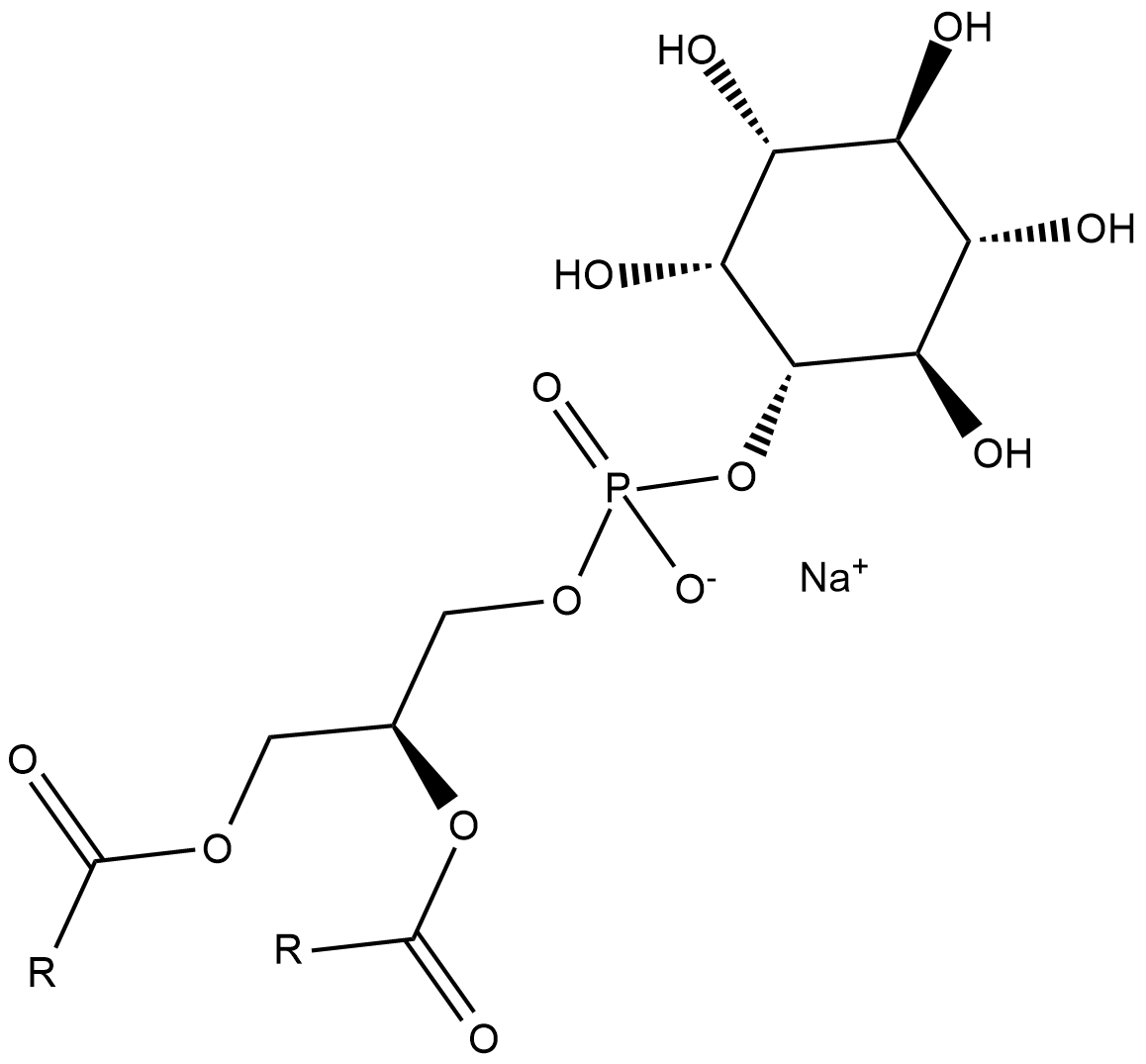
-
GC44633
Phosphatidylserines (bovine)
Phosphatidylserine is a naturally occurring phospholipid that comprises 2-10% of total phospholipids in mammals and is enriched in the central nervous system, particularly the retina.

-
GC18522
Phosphatidylserines (sodium salt)
Phosphatidylserine is a naturally occurring phospholipid that comprises 2-10% of total phospholipids in mammals and is enriched in the central nervous system, particularly the retina.
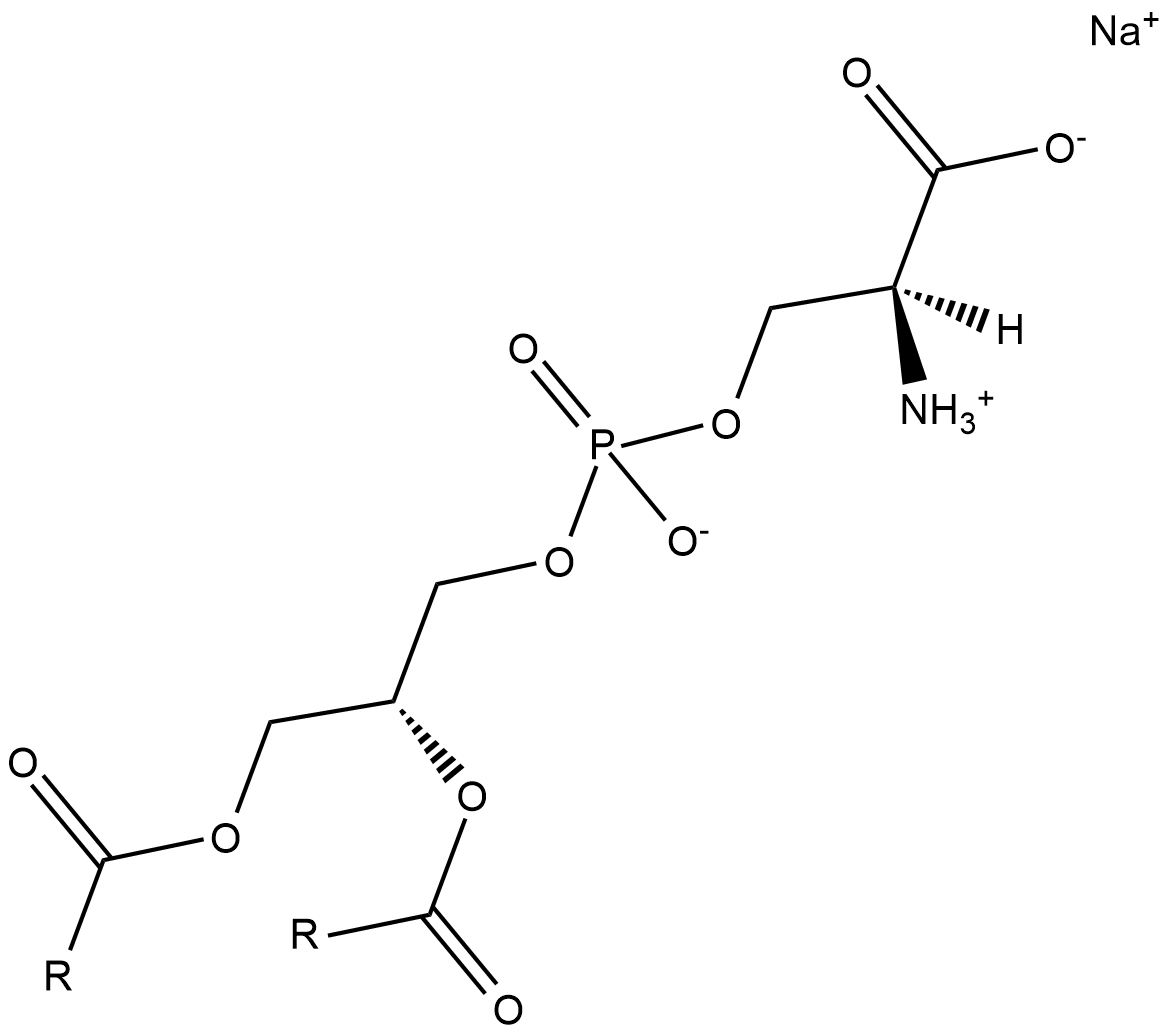
-
GC48385
SM-102
SM-102 is a synthetic ionizable amino lipid that has been widely used to combine with other lipids to form lipid nanoparticles.

-
GC52055
TCL053

-
GC52131
Tetramyristoylcardiolipin (ammonium salt)

-
GC52084
YSK05
YSK05 is a pH-sensitive cationic lipid. YSK05 improves the intracellular trafficking of non-viral vectors. YSK05-MEND shows significantly good gene silencing activity and hemolytic activity. YSK05 overcomes the suppression of endosomal escape by PEGylation. YSK05 effectively enhances siRNA delivery both in vitro and in vivo.

-
GC64704
ZA3-Ep10
ZA3-Ep10?is a zwitterionic lipid used in lipid nanoparticles formulation for in vivo RNA delivery and non-viral CRISPR/Cas gene editing.
